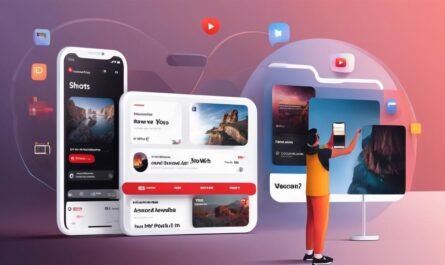In the age of tweetstorm tirades and snappy Snapchats, the notion that blogging is a dying craft has seen increasing popularity. Yet, undeniably, blogging continues to thrive in the digital landscape, tirelessly adapting and evolving with the dynamic digital world. This highlights the resilience of the blogosphere and underscores its relevance and vital role in today’s content-driven ecosystem. There are myriad reasons why blogging is far from being expelled into obscurity, the least of which includes the role of blogs amidst social media proliferation, their incorporation in successful content marketing strategies, and the sprinkling of technological advancements enhancing blogs’ artistic and marketing value.
The Role of Blogs in the Era of Social Media

Harnessing the Power of Blogs in the Social Media Age
Blogs may seem like an antiquated concept in the age of bite-sized tweets, lively TikTok dance routines, and immersive Instagram Stories. Still, reports of the death of blogging have been greatly exaggerated. In fact, blogs continue to hold a significant foothold in the fast-paced world of digital communication. Let’s delve into the reasons why blogs retain their relevance amid the prevalence of social media platforms.
The first powerful attribute on blogs’ side is the unrestricted length and breadth of content. Social media platforms tend to restrict the length of posts, limiting expansive discussions and detailed presentations of thoughts. Blogs, however, enable authors to articulate ideas, views, and information freely without constraints.
Next on the list is Search Engine Optimization (SEO), a critical element of digital visibility. With blogs, SEO can be optimized, increasing the chance of appearing on the front page of search engine results – and, therefore, user discovery. On the flip side, social media posts are rarely SEO friendly.
Blogs also allow control over the narrative with no censorship (in most legal realms) or platform restrictions influencing the content. In contrast, social media often imposes community standards and guidelines, which might suppress certain content.
Talking about longevity, the lifespan of a blog post far exceeds that of a typical social media post. Social media posts are often ephemeral, gaining traction for a brief time before getting lost in the relentless flow of new content. A blog entry, however, remains accessible and visible indefinitely, offering a more significant return on time and effort invested.
Another compelling case for blogs is analytics. The analysis data offered by blogging platforms can provide insights into readership, time spent on-page, and bounce rates. This data can be indispensable for businesses for feedback and direction in content creation. While social media platforms also offer analytics, those are often less detailed than those provided by blogs.
In terms of audience engagement, blogs provide a platform for much more meaningful interaction between authors and readers. Comments sections can host vibrant discussions; these, in turn, build a community around a blog. This is a level of engagement that micro-comments or reactions on social media often cannot replicate.
When it comes to monetizing content, blogs also hold sway. They provide various potential revenue streams, including advertising, product promotions, paid subscriptions, and affiliate marketing. Although social media does offer monetization opportunities, they’re typically available only to high-profile accounts.
Blogs, therefore, while not having the immediacy or widespread reach of social media platforms, offer an in-depth, customizable digital presence. Considering that individuals and businesses now need sophisticated online engagement strategies embracing multiple platforms, it seems that blogs, rather than disappearing, are evolving into an indispensable part of the broader digital content ecosystem.
Blogs as a Vital Channel in Content Marketing Strategy

The Unrelenting Prominence of Blogs in Modern Content Marketing Strategies
Though we exist in an era where technology evolves at an unrelenting pace, driven by emerging platforms and modes of communication, a stalwart of digital presence persists in its efficacy – the blog. In the realm of content marketing, blogs maintain a unique distinction. They transcend passing trends and redefine their utility with impressive adaptability, seamlessly integrating with evolving tech trends and the shifting needs of businesses and audiences alike.
A key facet that bolsters the value of blogs in content marketing is its innate ability to facilitate thought leadership. Create cogent, high-quality write-ups on industry-related topics, lay forth informed opinions, and before long, a certain rapport establishes between the blogger and the audience. It’s akin to offering expert advice lending credibility to your brand and making it a go-to resource for inquiries. Blogging empowers brands to exhibit authority, thereby fostering relationships anchored in trust—a vital winning trait in content marketing strategies.
Another compelling argument for the utilization of blogs is a little something the tech world calls ‘evergreen content.’ Blog posts that deliver value irrespective of the day, month, or year. The beauty of this perpetually relevant content? It continues to attract users to your website, long past its publication date. Moreover, this long-term traffic magnet creatively incorporated into your content marketing strategy offers noteworthy ROI.
Yet another advantage offered by blogs that significantly contribute to content marketing strategies is the ability to boost direct customer conversions. Blogging isn’t merely about depositing information on a website. It’s about guiding the reader, educating them, helping them see the value in your offerings, and eventually persuading them to take the desired action—a conversion, if you will.
Let’s not forget the power of backlinks. When high-authority domains link back to your blog content, it does more than enhance your SEO rankings. It adds to your online reputation as a credible information source, thereby attracting a wider audience and potentially more customers.
Lastly, blogs offer remarkable localization potential. Given today’s globalized marketplace, the ability to cater to a local audience using geographically relevant content builds strong relations with the community. Businesses can use blogs to integrate local SEO keywords and focus on region-specific issues or trends, rendering their content marketing strategy with a local flavor.
In conclusion, while blogs may seem like traditional tools, their flexibility and wide-ranging benefits make them indispensable components in the toolkit of every serious content marketer. They are, essentially, the metaphorical Swiss knives of content marketing strategies.
Just a look into the blogosphere today, it shines as a hub of inspiration, innovation, and some fiercely competitive marketing strategies. Blogs not only drive but also encapsulate the true essence of content marketing, resonating deeply with audience wants, needs, and expectations. And they will continue to do so, their roots burrowing deeper into the tech-infused terrain of the future.
Tech Innovations Fueling the Evolution of Blogging

In addition to the multitude of ways technological advancements have revolutionized the blogging landscape, there are several more notable developments. Particularly intriguing are the developments that center around automation, AR/VR implementation, voice-activated blogging, microblogging, and use of Artificial Intelligence (AI) in content creation and curation.
Scrutinizing these technological shifts in blogging uncovers diverse methods bloggers use to resonate with their audience, enhance accessibility, and drive traffic.
Automation has evolved to become a handy tool in the blogger’s toolbox. Pre-scheduling posts and automated distribution have enabled bloggers to maintain consistent content flow, even during periods of unavailability. Automated email newsletters, after incorporating captivating highlights from recent blog posts, can be dispatched to subscribers, reinforcing the connection between the blogger and the audience.
Augmented Reality (AR) and Virtual Reality (VR) present potent tools that bloggers now leverage for interactive and immersive storytelling. For instance, a travel blogger can recreate a virtual tour of a recently visited city, facilitating a more connected experience for their readers.
The advent of voice-activated blogging denotes another compelling tech-oriented modification. With smart speakers and digital assistants, such as Amazon Echo and Google Nest, becoming commonplace, bloggers are adapting their content for voice search. Creating blog posts that answer common queries related to their niche can drive traffic from these voice-activated devices.
Microblogging has also created new waves in the blogging landscape. Platforms like Twitter combine brevity with immediacy, allowing bloggers to create a real-time dialogue with readers. This has internally pushed the rise of “live-blogging” events or news, securing bloggers a key role in disseminating information quickly and effectively.
Another major breakthrough is the role of AI in creating and curating blog content. Today, AI-powered solutions can gather data, analyze trends, and even produce draft blog posts. These technology-infused drafts can give bloggers a head start, allowing them to focus more on fine-tuning the narrative and style while saving time on initial research and drafting.
Moreover, AI’s curation capabilities have forever altered content discoverability. AI algorithms can now predict and suggest what kind of content a reader might enjoy, facilitating personalized content delivery that works in the blogger’s favor. This essentially has the potential to broaden the reach of blog posts, making them more likely to attract new audiences.
The intersection of blogging and technology hasn’t just reshaped the blogging landscape — it’s redefined it. The advances have undoubtedly steered towards a more engaging, interactive, and convenient blogging era. Embracing these changes will be crucial for bloggers aiming to lead in the rapidly evolving digital space. It begs the question: what’s next in the blogging horizon? How will bloggers adapt to new technology and trends? Only time and more tech advancements will tell.
Final Thoughts About Is Blogging Dead

As we navigate through the relentless waves of digital revolution, it becomes increasingly clear that blogging is not just enduring but also adapting and proliferating. Leveraging its innate capabilities to provide comprehensive storytelling, empowering content marketing, and harnessing innovative tech trends, blogging continues to forge a compelling space in the virtual world. Its demise is, therefore, a speculation far removed from reality. In essence, the blogosphere isn’t dying; it is reshaping, redefining, and rejuvenating to match the rhythm of the 21st century, and in so doing, it offers an ever-evolving platform for content creators and marketers to connect, engage, and influence their audience in meaningful and lasting ways.

Are you a digital marketer, eBook publisher, or own a small business and are looking to expand your reach? Our services can assist you. We have aided over 600 clients with post publishing, social media marketing, and online advertising. Send us an email at contact@thumbwind.com. We will send you free program information on extending your audience without breaking the bank.




